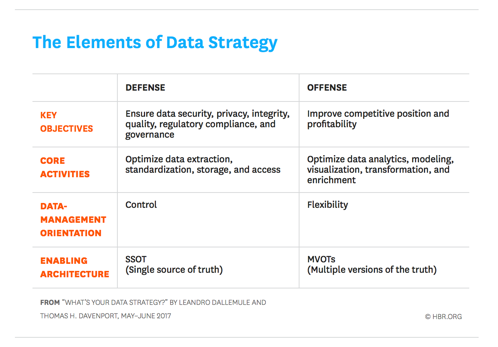It’s not uncommon to head into springtime with an intention to lose those 8 pounds of winter weight in time for beach season. But we soon realize that a diet alone will ultimately fail, as those impromptu business dinners and client entertainment binge calories don’t align well with a calorie restriction plan. But a sweat-it-out, daily exercise regime can’t deliver the proper result either if our new job demands create very limited chances to get to the gym on weeknights. Catching up on sleep seems more attractive than trying to fit the treadmill in!
Therefore, the best strategy for success combines diet and exercise, with a firm understanding of the weight loss goal and challenges up front. There is a control aspect (retain good health) and a flexibility aspect (walk the stairs to enable cheat days), that enables a process that is aligned with the goal. There is clarity in the primary purpose of the strategy and it guides the weight loss management and process.
Believe it or not, this same strategy and awareness principal applies to enterprise data strategy and governance.
How can you be data rich, yet information poor: lessons learned
Enterprise companies should define their data strategies first, and commit to a proposed balance of Defense (Control) versus Offense (Flexibility/Growth) in their approach. When defining strategy, defense is about things like limiting risk and ensuring compliance, while offense is about improving competitive position and profitability. Achieving proper balance and flexibility is key to ensure that you fulfill on the desired purpose and use of the data.
In the real world, it’s all too often that data strategy is defined by IT with a technical (control) bias, not aligned with the business desire for flexibility. This mistake leads to an inflexible defensive data strategy that has too much focus on control of data and a myopic single source of truth (SSOT) perspective which has limited value in decision making to the business (who wasn’t consulted to begin with). It’s fine to protect yourself against compliance data audits, but don’t you want to crush your competition or be the driving force behind the greatest profits ever achieved in your firm? OFFENSE is where the data becomes transformative.
Technology people alone will not get this right. They must engage the business and senior executives who can dictate a true business value proposition for the information derived from the data. Multiple Versions of Truth (MVOT) result from the business-specific transformation of SSOT data that is integrated and transformed into information that can guide decision making. This information can empower the Growth (Offense) strategies required to unleash value and business purpose.

Operationalizing analytics through data governance
Technology teams and business unit leaders need to come together to decide what the priorities are for data usage, where it can have the biggest impact, and how they’re going to operationalize those priorities. Technology can be key in the automation and operationalization of data governance; how will people find, understand and trust the data and information assets you provide?
Data governance provides the framework to embed analytics into your business systems and processes used to run your business. A good data governance platform is one that crosses the silos in your business and drives collaboration amongst the people who use the data, in line with your corporate strategy. It provides a technology platform and framework to support the processes needed to ensure everyone who can benefit from valuable information can find it, trust it and use it in the proper way (Defense or Offense use cases).
Where the rubber meets the road, getting business value from your information should ultimately be as important as ensuring the security or quality of data from a technology standpoint. Your organization must find a way to establish trust in the data so everyone can use data to drive innovation, make better decisions, and move the business forward. To address this challenge, you need a governance process supported by a system of record for your data. This is data governance.
A balanced data strategy is key
Whereas the CEO—often with the CIO—is ultimately responsible for a company’s data strategy, the CDO commonly conceives it and leads its development and execution. The CDO must determine the right trade-offs while dynamically adjusting the balance by leveraging the SSOT and MVOTs architectures, and striking the best balance between defense and offense and between control and flexibility.
For CDOs focused on – and accustomed to – the world of regulations, the challenge will be to drive both control and growth mandates concurrently. Many obstacles will have to be confronted including the need to justify additional funding, modify or enhance control oriented legacy operational structures, address the lack of talent in the emerging data and analytics areas, and evolve the business capabilities to leverage data as an asset.
It is important to focus on evolving the maturity of tools that will benefit both agendas; communicate the data assets of the firm in an easy-to-understand manner for line managers and business executives; and establish business-friendly views of data resources, projects, sources, usage and value realized. (source)
Last but not least, to ensure alignment with corporate strategy, a cross-organizational data governance platform can break down traditional data silos and make all aspects of organizational data and information available as a strategic data system of record. This allows business users to find, collaborate, and easily understand data assets in the operational workflow of the business process to unleash the value and meaning of data for the greatest desired impact; offense or defense.



